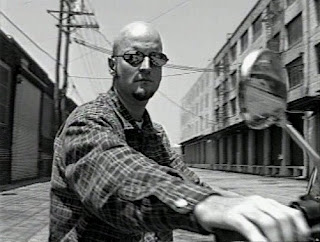I developed my own filmic style - realistic, intense, dynamic, atmospheric - with influences from Ridley Scott, John Frankenheimer, Hitchcock.
I believe it is very important to establish dramatic integrity - usually involving seemingly ordinary people in an extraordinary situation, so the audience can believe it, and put their feet vicariously in the character's shoes.
Suspense and action sequences need to be properly built up to - you need to create rising anticipation - even a "great" action scene doesn't really work for the audience if it's lacking good dramatic context. They're just left watching stuff blow up or whatever without being emotionally involved.
Movies at their best are all about intimacy and passion - communicating passion and determination, whether it's epic or small scale. Even in a fight or chase scene it's important the audience sees and feels the characters' minds working -- using well-placed quick close-ups of the characters' faces as they decide to go after someone, or throw a punch, or turn the steering wheel to take a dangerous curve --
Feeling that gritty determination from the characters involved makes an action sequence much more dramatic.
PRE-VISUALIZATION: I know how to design for the shoot and edit. I don't start by going through some long technical shot-list process. I go right to storyboarding, because visuals come naturally to me - angles, compositions, framing, image size, the order of the shots, which can then be played with - edited - on paper. Shot lists can then be developed from the storyboard for scheduling purposes.
SHOOTING: It's all about coming in prepared. Getting everyone on the same page. Knowing how to make adjustments when necessary. Like Ridley Scott, Clint Eastwood, Steven Spielberg, I prefer to shoot few takes, to keep it fresh. Get it done, and move on. Two cameras, if possible. Get dialog scenes done relatively quickly so more time can be spent on action scenes, which naturally need more complex staging and camerawork.
CAST: I strive to create an alternate reality for the cast, in designing the environment/atmosphere of the story for them on the set. I want them to feel they can try things, take risks. I communicate enthusiasm, commitment to the vision, create trust. The actors know I will protect them, encourage them, collaborate, let them know where the boundaries are. Make the actors feel comfortable and safe - in a dramatically dangerous place. And know that what we create together will be consistent, of a piece, and that the work will be protected.
With dark material, the actors need to go where the material demands. They need to live it. This takes a lot out of them. They get beat up in the process. Need a long shower at the end of each day. It's a tough, intense, intimate journey. I bring them to it, go there with them, guide them, push them, encourage them, comfort them, protect them. I am very good at handling this kind of material, its demands, and taking actors through it.
Once the overall approach is established, I prefer to keep it straightforward during day-to-day shooting: few words, develop a shorthand, faster, slower, more, less. Once the boundaries are set, actors want to get into the scene and be the character. Best at that point to just let them do it. Give guidance when necessary, but let them go...!






